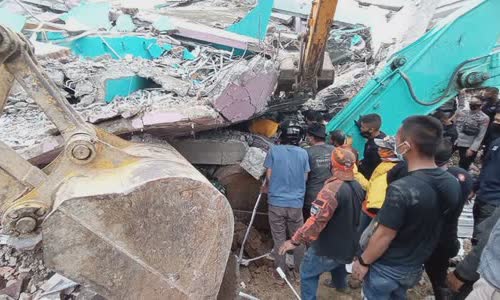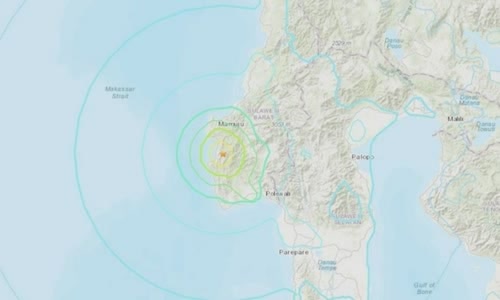A Mamuju resident said he had to flee because the house collapsed, while the city suffered serious damage after the earthquake on the morning of January 15.
"The earthquake was very strong. I woke up and ran away with my wife. The roads were broken, a lot of buildings collapsed," said Hendra, 28, a resident of Mamuju city, Sulawesi island, on January 15.

Rescuers look for survivors of this morning's earthquake in Mamuju, Sulawesi Photo: AFP.
Images of the scene show people fleeing the coastal city by cars and motorbikes, passing metal roofs and debris from many roadside buildings.
"The latest information we have received is that there were 26 deaths in the city of Mamuju alone. Many are buried under the rubble," said Ali Rahman, head of the local disaster mitigation agency.
At least eight people died in the southern region of Mamuju, a city of about 110,000 in West Sulaweisi province, Indonesia's National Disaster Agency said, bringing the total number of deaths to 34.
Rescuers are looking for more than 10 patients and medical staff trapped under the rubble of Mamuju Hospital, the building flattened after the quake.
"The hospital is a waste now. There are a lot of patients and staff trapped below, we are trying to reach them," said Arianto, a member of the city's rescue force, without revealing.
Rescuers also tried to reach a family of eight trapped under the rubble.

Location of today's earthquake in Indonesia Photo: USGS.
The Indonesian Meteorological Agency warned that the area could suffer aftershocks, advising residents to stay away from the coast in case a tsunami occurs.
"Aftershocks could be as strong or stronger than this morning's quake. There is a possibility of a tsunami from the next aftershock. Don't wait for warnings, but take precautions first because the tsunami comes very quickly," says Dwikorita Karnawati
Location of today's earthquake in Indonesia.
The warning intensified fear in the city being shaken by the 6.2-magnitude earthquake.
Indonesia often experiences earthquakes and volcanoes because it is located on the "volcanic belt" of the Pacific Ocean, where tectonic plates collide.



 David Cote
David Cote







